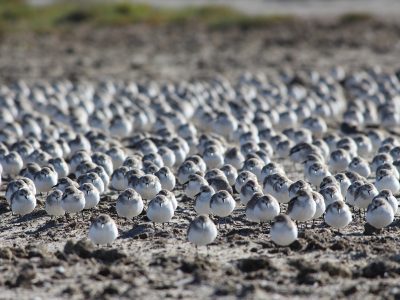Impact of sea-level rise on coastal natural values in Tasmania

Red-Necked Stints (Australia)
The coast constantly falls through the cracks ’between’ focal areas and interests relating to various ’care’ groups and campaigns.
Australians see the coast as a resource (”what can be do with the coast”, ”what can we do at the coast” etc) rather than the habitat that it is. From my seabird/shorebird perspective, the coast is not recognised or acknowledged as a habitat for coastal-dependent and coastal-obligate species. The coast is simply there for our use. So many people refuse to accept that birds (and other species) could breed on beaches and rocky foreshores etc.
Part of my message for the last 30 years (!) has been that the coast is a critical habitat (I don’t use the word ecotone, but the message is consistent with doing so) and that it is just as important as any other (bird) habitat in Australia. We really need a culture shift in our attitudes towards coasts and the species dependent on them in Australia, otherwise we risk losing so many coastal natural values.
In Tasmania, coastal ’hazards’ foci have been around storm surges and flooding events, there is no interest by State Govt on conservation of coastal natural values. It’s all about infrastructure and human values/interests.
I realise I am preaching to the converted, but this issue of conserving coastal natural values is becoming a greater focus for me as analyses of my 30+ years of shorebird surveys and mapping here in Tasmania have identified Tas as a national and international refuge for a number of shorebirds; further info at https://coastadapt.com.au/case-studies/impact-sea-level-rise-coastal-natural-values-tasmania
Eric J Woehler
Words by Eric J Woehler. Please respect the author’s thoughts and reference appropriately: (c) ACS, 2020. For correspondence about this blog post please email austcoastsoc@gmail.com


 ENVIRONMENTAL VALUES REMAIN THREATENED
ENVIRONMENTAL VALUES REMAIN THREATENED